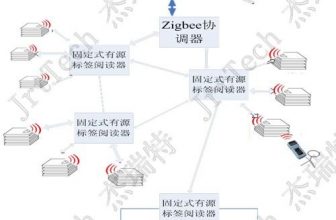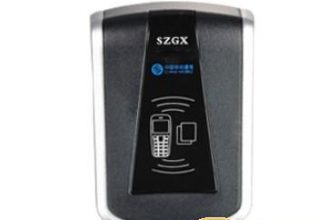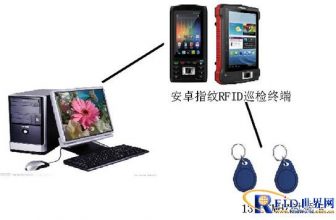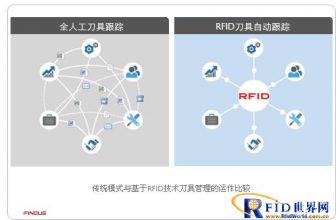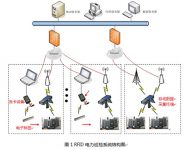
Electric power inspection system based on RFID technology
[ad_1]
1. Project background
1.1 Overview
With the development of society and the improvement of modernization, electricity is playing an increasingly important role in social life and social production. The vast majority of household electrical appliances and production equipment rely on electricity to operate. Power transmission equipment is an important guarantee for the source of power. Once a certain equipment fails or accidents in its safe operation, it will cause inconvenience to people’s life and production in a certain area, and at worst, it will paralyze people’s life and production and may affect it. The entire network where it is located has caused huge social impacts and economic losses, so the safe operation of transmission equipment is the top priority of all work. However, the current transmission equipment management is still a combination of regular maintenance and post-maintenance. It lacks a dynamic grasp of the equipment status, and cannot highlight the key points in the maintenance. On the contrary, some hidden danger equipment has not been fully and thoroughly overhauled.
Power equipment inspection, as a new equipment management mode, has become a very effective way to detect equipment failures in time and eliminate accidents in the bud through periodic inspection and repair of equipment. It plays an important role in improving the success rate of unit startup and unit availability, and ensuring the normal operation of transmission equipment. Therefore, it is of great significance to strengthen the equipment inspection work of the power plant.
1.2 Management status
Inspection is a basic work to ensure the safety of electrical equipment. It can improve the reliability of electrical equipment and ensure that the equipment is at the minimum failure rate. However, at present, manual inspections and manual paper records are commonly used in China. Due to the lack of effective The supervision measures of the People’s Republic of China have defects such as many human factors, high management costs, inability to supervise the work of inspection personnel, and low degree of informationization of inspection data. At the same time, in the line inspection work, some lines may be difficult to reach by personnel or cannot be reached due to faults. It is necessary to obtain the equipment information from a long distance in time, and traditional methods cannot meet this requirement.
2. RFID power inspection application
RFID uses wireless radio frequency to carry out non-contact two-way data transmission between the reader and the radio frequency tag to achieve the purpose of target identification and data exchange. The reader sends a radio frequency signal of a certain frequency through the transmitting antenna. When the radio frequency tag enters the working area of the transmitting antenna, an induced current is generated, and the radio frequency tag gains energy and is activated; the radio frequency tag transmits its own encoding and other information through the card’s built-in transmitting antenna; the system receives The antenna receives the carrier signal sent from the radio frequency tag, and transmits it to the reader through the antenna adjuster. The reader demodulates and decodes the received signal, and then sends it to the background main system for related processing.
RFID technology has the characteristics of non-contact, fast reading speed, wear-free, long life, and easy to use, and can be used in various harsh environments. At the same time, RFID tags have the characteristics of large storage capacity and long distance, which can realize multi-target recognition and penetrating most medium recognition. The application in electric power inspection projects can highlight various current inspection defects and create more Intelligent and more effective power inspection system.
3. System design
Shenzhen Quanshunhong Technology Co., Ltd. asRFIDLeading brand-ThingMagic agent, while providing all major operators and integrators with ThingMagic full range of products, the company has been providing customers with world-class RFID with a professional technical team, high-quality service and preferential prices. Equipment solutions and high-quality after-sales service. The company cooperates with major operators and integrators to successfully use ThingMagic RFID equipment in various applications such as manufacturing, warehouse management, aviation shipping, clothing retail, anti-counterfeiting and traceability.
Quanshunhong RFID power inspection system consists of on-site power equipment and card issuing equipment, electronic tags, mobile data collection terminals and application systems that need to be inspected.
3.1 System architecture
The overall architecture of the power system is shown in Figure 1.

(1) The card issuing device mainly completes the data initialization of the electronic tag, and writes the specific asset code and other information of the power company into the electronic tag;
(2) Electronic tags are used to store detailed data information and historical verification information of the device;
(3) The mobile data acquisition terminal is a tool for inspection operations. It can inspect the designated equipment of the designated unit according to the tasks downloaded from the PC application, record the inspection results, and then transmit the field data to the PC through the wireless communication network. Machine background management system;
(4) The device application server is responsible for operations such as customer management and data sorting, and interacts with the database server;
(5) The database server is responsible for storing the basic data and parameter information of the power equipment, the query and statistics of the RFID electronic label information, and the user management, help and other information.
3.2 System flow
3.2.1 Electronic label issuance
Card issuance is to complete the initialization of electronic label information and establish basic data. Because power equipment is mostly made of metal, the electronic tag used in this solution is an anti-metal tag. This type of label is different from the general Inlay label, which can be printed directly by an RFID printer. As a special-shaped label, it can only be issued one by one through an RFID card issuer. The RFID card issuer with group card writing function will greatly mention the card issuing efficiency in this link, and it is especially suitable for special-shaped tags such as anti-metal.
3.2.2 Inspection
When the inspectors carry the mobile data collection terminal and go out for inspections, they read the electronic tags through the mobile receipt collection terminal to obtain equipment-related information, and take pictures of the equipment according to the situation, while recording the operation of the equipment and the execution of the characters. If a fault is found, the current mobile data collection terminal will send the fault type, equipment number and other information to the background management system.

The back-end management system reads and stores the information sent back from the mobile data collection terminal, breaks down the time, location, equipment type, and finder of the fault sending, and automatically stores this information in the database server and publishes it online. In addition, the system displays the inspection status in real time, such as displaying various fault points, emergency situations, handling conditions, current status of various faults, and the location and inspection route of each inspector at a certain time. The system can also perform statistics, summary, and analysis of various historical data stored in the database, and use various charts or reports to display the frequency and objects of various faults within a certain period of time for management personnel to predict and analyze to strengthen management and Formulate countermeasures to achieve the purpose of prior control, ultimately reduce the accident rate, and ensure the safe operation of power equipment.
3.3 Implementation benefits
Quanshunhong’s power inspection system based on RFID technology will be able to solve the problems of power companies in the inspection and inspection, and bring tangible benefits to the company, which are mainly reflected in the following aspects:
It is convenient for inspection personnel to conduct inspections and submit inspection results, reducing the chance of human error;
Ensure that the inspection personnel are in place, and ensure the inspection quality and management efficiency of the inspection work;
The quality and efficiency of inspections have been greatly improved to ensure the stable operation of transmission equipment, prevent problems before they occur, reduce the incidence of failures, and reduce business operating costs;
Improved data analysis and statistics functions, and improved the efficiency of management personnel to deal with defects
4. Hardware equipment selection
In power inspections, mobile data acquisition terminals are the key data acquisition equipment. To meet the needs of the system, it not only needs to have a long reading distance, stable reading performance, but also strive to be miniaturized to facilitate inspections. Long-term use. In this system, Chuan Shunhong ThingMagic M6e-Micro’s excellent performance fully meets the demanding requirements of the system.
Quanshunhong ThingMagic M6e-Micro, a UHF RFID mold with ultra-small module structure design and excellent “quick search algorithm”, can be embedded in a variety of commonly used handheld and portable devices. It can read tags at a speed of up to 750 tags/s, responds quickly after receiving instructions, and has low power consumption, which means that it has better battery life for mobile data collection terminals and ensures smooth work of inspectors. At the same time, its unique adjustable power from -5dbm to +30dbm can meet the precise positioning of short-distance equipment, and it can also realize the acquisition of long-distance equipment information in complex environments, which is very flexible and practical.

Labeling protocol EPCglobal Gen 2 (ISO 18000-6C) DRM support; ISO 18000-6B (*optional);
I-PX (*optional)
Antenna connector 2 50 ohm UFL connected to the edge of the machine or motherboard, supporting 2 independent antennas
RF output independent read and write mode, -5 to 30dBm output, ±1dBm adjustable
Frequency characteristics ETSI (EU, India) 865.6-867.6 MHz; TRAI 865-867 MHz (India); KCC (Korea) 917-920.8 MHz; ACMA (Australia) 920-926 MHz; SRRC-MII (PRChina) 920-925 MHz ; Open (Customizable channel plan;865-868MHz and 902-928 MHz);
The connector has a 28-pin stamp hole connector connection mode (including power supply, communication and GPIO)
Communication interface serial asynchronous communication, 3.3V or 5V logic;
Baud rate 9600-921, 600bps;
USB2.0 hardware interface (up to 12Mbps)
Restart and shutdown control
The label reading rate is greater than 750 labels/sec; use high-performance settings
The tag reading distance is greater than 30 feet (9 M), using 6dBi antenna (36dBm EIRP)
[ad_2]


